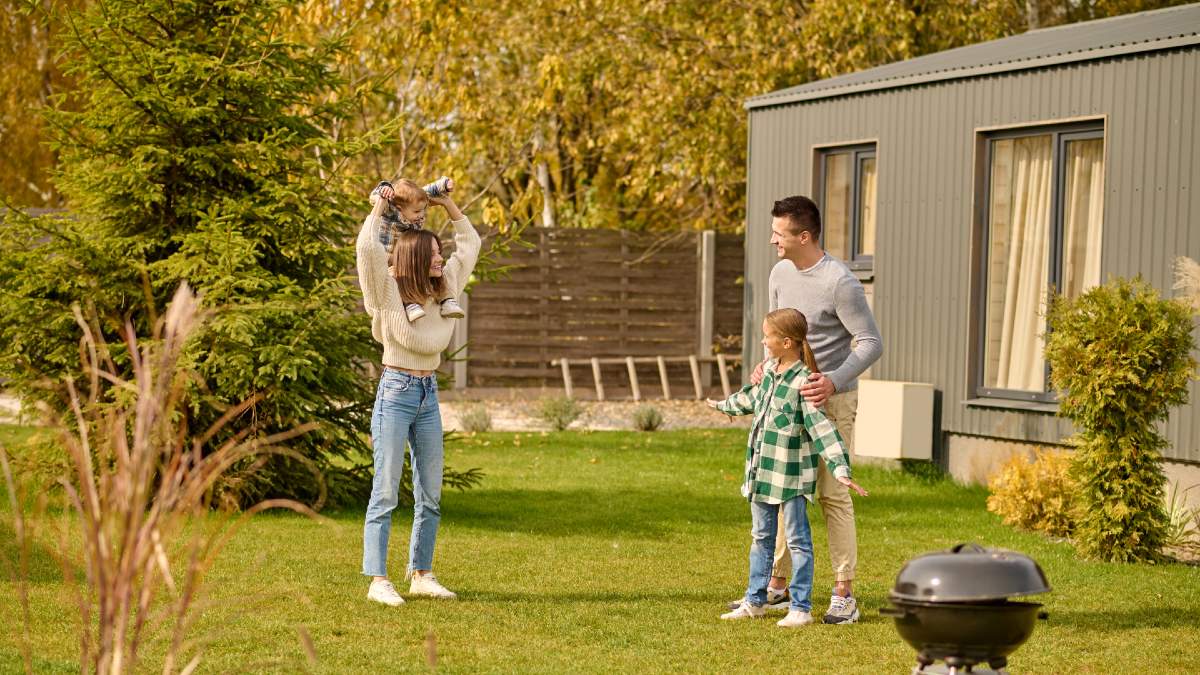
Promoted by loans.com.au
A multigenerational household refers to a living arrangement where multiple generations of a family reside together under one roof. Think of a home where grandparents, their children, and their grandchildren share spaces and resources. In some cases, it may also include extended family members, such as aunts, uncles, and cousins.
Between the 2016 and 2021 Censuses, the number of households containing three generations grew by 22%. Several factors contribute to this growing trend, including cultural traditions, an ageing population, and economic pressures.
Living with family into adulthood, historically less common in Australia, is becoming popular as influences from cultures that value extended family living arrangements take root.
"Typically, ubiquity drives acceptability; as more people do something, the social norm shifts and the behaviour becomes more acceptable as we habituate to the new thing," said clinical psychologist Dr Katie Kjelsaas.
Beyond cultural influences and families choosing to care for elderly relatives at home, rising property prices and living costs are driving the growth of multigenerational households.
Challenges of Multigenerational Living
Lack of space and privacy constraints
Traditional Australian homes, often designed for nuclear families, present significant spatial challenges.
Maintaining personal privacy becomes difficult when separate living areas and additional bedrooms and bathrooms are lacking, especially in open-plan designs popular in modern homes.
Homes not originally designed for such occupancy may lead to overcrowding, causing daily logistical challenges and, worse, potential conflicts.
Design limitations for accessibility
Elderly family members may require homes with accessibility features such as ramps, wider doorways, and bathroom modifications. However, many Australian homes, particularly those built before the 21st century, were not designed with the needs of ageing occupants in mind.
Retrofitting existing homes to meet the minimum accessible design standards can be costly and structurally challenging. The Australian Building Codes Board estimates the additional cost to be between $2,900 and $4,400 per home.
While programs like the National Disability Insurance Scheme (NDIS) and My Aged Care offer support, eligibility criteria can be so stringent, often leaving many families to bear the financial burden themselves.
Noise and activity level management
Different generations often have varying schedules and noise tolerances. Young children may be active during early hours, while teenagers and young adults may keep later hours.
And when the house is buzzing with noise and activity at a time when someone else needs quiet, it can lead to disturbances and become another cause of tension among household members.
The Opportunity: Investing in Multigenerational Properties
The shift towards multigenerational living presents a unique opportunity for investors to focus on properties that accommodate extended families. These include dual occupancy homes and granny flats.
Dual occupancy homes
Dual occupancy homes feature two separate dwellings on a single block of land. These can be either attached (i.e., duplexes), which means they share a common wall, or detached as separate structures.
Each unit typically has its own entrance, kitchen, bathroom, and living areas, providing family members with their own spaces while remaining close to each other.
Granny flats
Granny flats are self-contained units built on the same property. They are commonly designed to host ageing family members or long-stay guests, providing them with the privacy of their own space while remaining in close proximity to the occupants of the main residence.
Properties with granny flats may attract a wider range of buyers and renters, especially multigenerational families.
Alternatively, constructing a granny flat unit on your property lot can generate a rental income stream that is more cost-effective than purchasing a separate investment property.
Design Considerations for Multigenerational Properties
When investing in or designing properties for multigenerational households, consider the following features to enhance functionality and appeal.
- Separate entrances - These ensure privacy for different households within the same property.
- Multiple kitchens and bathrooms - One important point of these homes is to reduce shared space conflicts, thus, it's vital to provide independent facilities.
- Flexible spaces - Think rooms that can adapt or transform over time, such as a study that can be converted into a bedroom.
- Accessibility features - Incorporate elements like step-free entrances and wider doorways to accommodate elderly or disabled family members.
Navigating Regulations and Planning
Requirements for multigenerational homes vary across different councils and states in Australia. Before investing in a dual occupancy home or granny flats, make sure you understand the zoning laws and planning requirements in the property's location.
In New South Wales, for instance, dual occupancy homes may require a Development Application (DA). Meanwhile, in Queensland, such developments are allowed in residential zones provided they meet minimum lot sizes and other planning guidelines.
Constructing granny flats also follows specific development standards, such as the maximum floor area (typically capped at 60 square metres), setbacks and height limits, and occupancy restrictions (i.e., cannot be rented to non-family members).
Given the complexity and variability of regulations, it is best to consult with professionals early on. Engage with town planners or architects, local council planning departments, and private certifiers to ensure that the multigenerational property you invest in is compliant and optimised for its intended use.
If you're keen to capitalise on this investment opportunity, check out investor home loans at loans.com.au.
Image by Freepik
